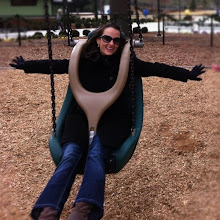If music be the food of love, play on,
Give me excess of it that, surfeiting,
The appetite may sicken and so die.
That strain again, it had a dying fall.
O, it came o’er my ear like the sweet sound
That breathes upon a bank of violets,
Stealing and giving odor. Enough, no more,
‘Tis not so sweet now as it was before.
[music ceases]
O spirit of love, how quick and fresh art thou
That, notwithstanding thy capacity
Receiveth as the sea, naught enters there,
Of what validity and pitch so e’er,
But falls into abatement and low price
Even in a minute! So full of shapes is fancy
That it alone is high fantastical.
As a stand alone piece of text this soliloquy works to point out the ever-changing character of love. Orsino uses natural images to lend visual context to the explanation of this abstract concept. Furthermore, the playing of music and the ceasing of it allow the reader to further connect the words of Orsino with something that appeals to their senses. Orsino describes the strain of music as having a dying cadence, starting strong and then progressively getting weaker. Orsino is obviously comparing the lessening strength of the music with the progression of love. Orsino further illuminates this theme by describing wind blowing over violets. While the wind “breathes” over the flowers it simultaneously yields fragrance while also taking the scent from the violets. Both these references, music and flowers, seem pleasing to Orsino at first, but then come to not be “as sweet” as they were before. Similarly, love begins with the near intoxication of infatuation but lessens with length of time. Further, the comparison between flowers and love can be taken further. Flowers are often connected with youth and youthfulness. A flower is in bloom for a time, during which it is beautiful, fragrant, and enjoyable. But, when a flower begins to wilt it loses both its beauty and pleasing smell. In the same way, love is often short lived and once love begins to fade it seems nearly putrid to dejected lovers. Orsino continues to use natural images by referring to the tides. Love, as the ocean, both asks for and is willing to receive a great amount. But, like the ebbing of tides, love also decreases after time. This comparison of love to tides is also interesting because tides continue to come and go. Therefore, although Orsino seems to be pointing to the way love can end quickly, he also may be saying that even when love seems to be ending it may return, just as high tide does.
When placed into the context of The Twelfth Night, Orsino’s soliloquy has similar meaning to its stand alone value. However, because this play is so full of confusion in relationships and characters who are constantly seeking the attention and recognition of those they love, the meanings are strengthened. Through reading the play, the reader receives an illustration of the ideas asserted by Orsino. Just as the tides ebb and flow, the relationships and connections between each of the characters also strengthen, weaken, and change. Furthermore, the reader is able to see how easily the characters fall in love with one another, fall out of love, and in love with someone else. Thus, placing Orsino’s soliloquy into the framework of the play does not lend a different meaning to the reading. Instead, placing Orsino’s words within the play’s context strengthens Orsino’s images and themes.

No comments:
Post a Comment